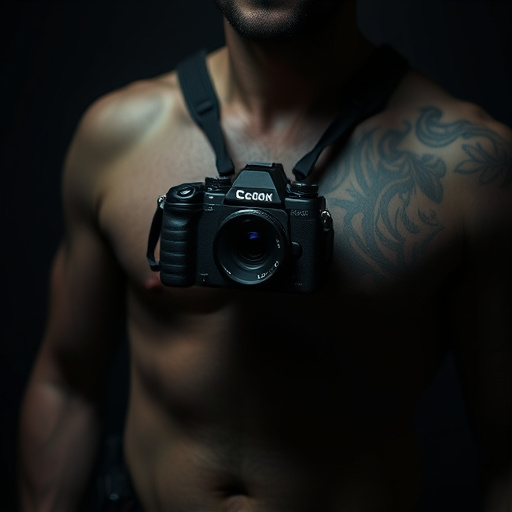Hidden personal body cameras (HPBCs), discreet wearable surveillance devices, offer real-time video and audio recording, enhancing transparency and evidence collection in legal matters and safety. However, their small size raises ethical concerns about consent, privacy rights, and potential for abuse. The need for regulation is evident as HPBCs transform interactions in tourism and professional fields like law enforcement, but public perception heavily weighs against them due to privacy invasion fears. Balancing societal good with civil liberties requires developing robust regulations to prevent misuse of these advanced devices.
Hidden personal body cameras have emerged as a controversial yet powerful tool, transforming how individuals capture and share their experiences. This comprehensive guide explores the intricacies of these tiny yet potent devices. We delve into legal landscapes, weighing privacy rights against public interest, and examine diverse use cases ranging from personal safety to investigative journalism. Additionally, we discuss technological advancements in detection methods and unravel the ethical dilemmas surrounding their deployment, offering a balanced perspective on hidden personal body cameras.
Understanding Hidden Personal Body Cameras: A Comprehensive Overview
Hidden personal body cameras, often referred to as wearable surveillance devices, are small, discreet cameras that individuals can carry on their person. These innovative tools have gained significant attention due to their potential to capture real-time video and audio, offering a unique perspective in various situations. Understanding their capabilities and implications is crucial, especially with privacy concerns rising.
These body cameras are designed to be non-intrusive, allowing users to record conversations, interactions, and environments without raising suspicion. They can be easily concealed under clothing or attached to accessories like hats or bags. The footage captured can provide valuable evidence in legal matters, personal security, and even everyday social interactions. However, their small size also raises ethical questions about consent, privacy rights, and the potential for abuse.
Legal Considerations and Privacy Concerns
The use of hidden personal body cameras raises significant legal considerations and privacy concerns. In many jurisdictions, citizens have a reasonable expectation of privacy, and the use of such devices to record interactions with law enforcement or other individuals without their knowledge can violate this expectation. This issue is further complicated by differing state and local laws regarding the recording of conversations and public spaces.
Privacy advocates argue that hidden personal body cameras can infringe upon civil liberties by allowing for unmonitored surveillance, while law enforcement agencies maintain they enhance transparency and accountability. Striking a balance between these perspectives is crucial to ensure legal compliance and protect both individual privacy rights and public safety interests.
Benefits and Use Cases for Hidden Body Cameras
Hidden personal body cameras offer a range of benefits, transforming how individuals capture and share their experiences. Their discreet nature allows users to record videos or take photos without drawing attention, making them ideal for various situations. For example, in tourism, hidden cameras enable travelers to immerse themselves in local cultures by capturing authentic moments unaffected by being observed.
In terms of safety, these devices are valuable tools. They can serve as personal evidence in case of an incident, providing clarity and justice. For instance, in personal security scenarios, hidden body cameras can record interactions with potentially harmful individuals, ensuring accountability. Additionally, they find applications in professional fields like law enforcement, where officers may use them to document evidence or de-escalate tense situations, thereby enhancing operational efficiency and transparency.
Technological Advancements and Detection Methods
Technological advancements have played a pivotal role in the evolution of hidden personal body cameras, making them increasingly sophisticated and undetectable. These tiny devices are now equipped with advanced features such as high-definition video recording, motion sensors, and infrared capabilities, allowing for discreet and covert surveillance. The use of miniaturized technology has enabled these cameras to be seamlessly integrated into everyday items like watches, buttons, or even jewelry, making them nearly impossible to identify without specialized detection methods.
Detection methods have also evolved to keep pace with the advancements in hidden personal body camera technology. Metal detectors, thermal imaging devices, and advanced video analysis software are just a few tools used by law enforcement and security personnel to identify these concealed cameras. With the ability to detect subtle electromagnetic signals or infrared emissions, these methods help ensure that privacy invasions through hidden body cameras are uncovered and addressed promptly.
Ethical Implications and Public Perception
The introduction of hidden personal body cameras has sparked both excitement and concern, leading to a complex web of ethical implications and public perception. On one hand, these devices promise enhanced transparency and accountability in various sectors, from law enforcement to healthcare. They can serve as powerful tools for documenting interactions, ensuring compliance with regulations, and providing evidence in cases of disputes or misconduct. However, the very nature of being unobserved raises significant privacy and ethical issues.
Public perception plays a crucial role in shaping the future of hidden personal body cameras. Many individuals express worries about potential abuse of power, invasion of privacy, and the erosion of trust between citizens and those entrusted with such technology. The challenge lies in striking a delicate balance—respecting individual freedoms while leveraging technology for positive societal change. As discussions continue, it’s imperative to consider the impact on civil liberties and develop robust regulations to safeguard against misuse.
